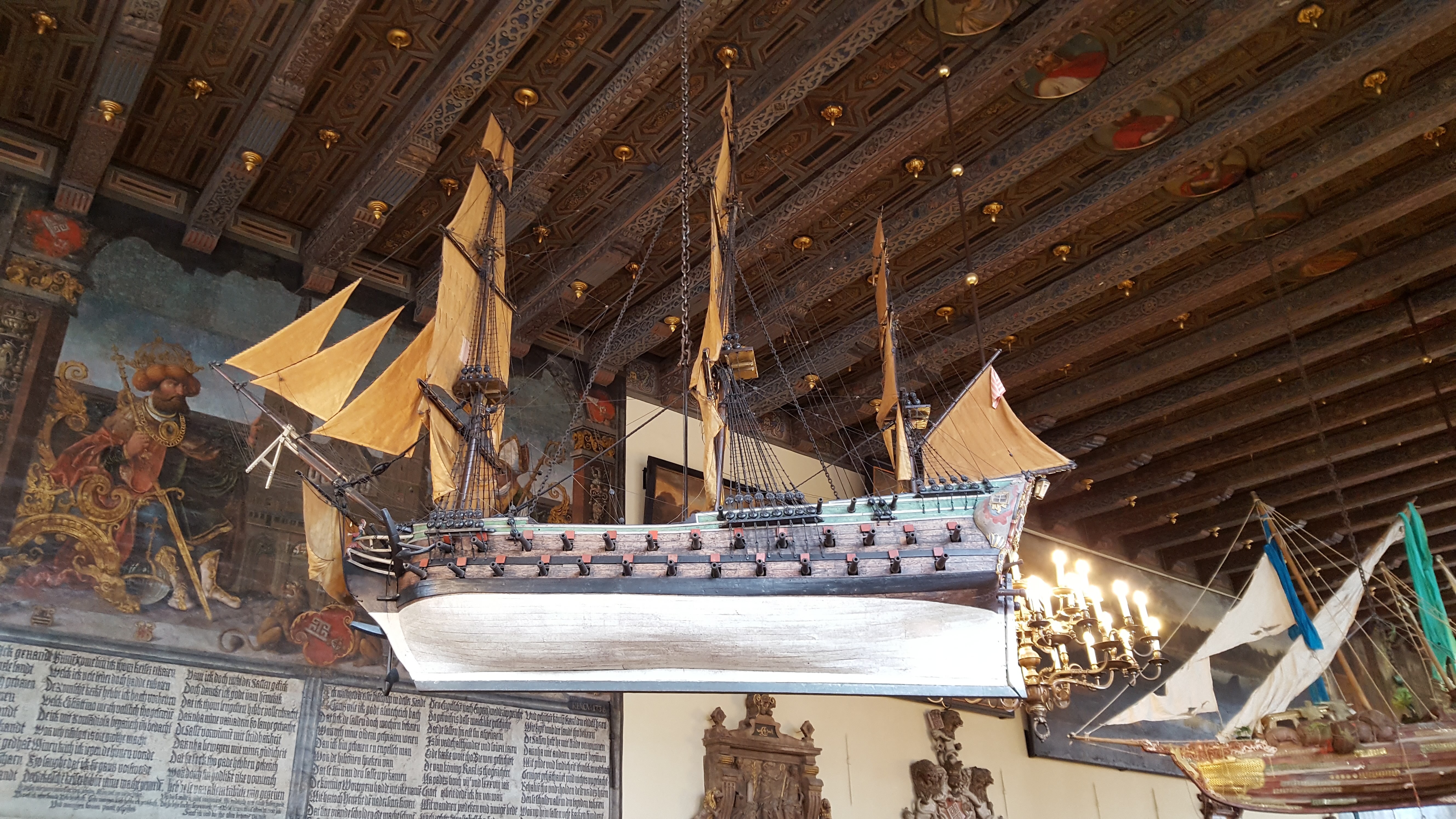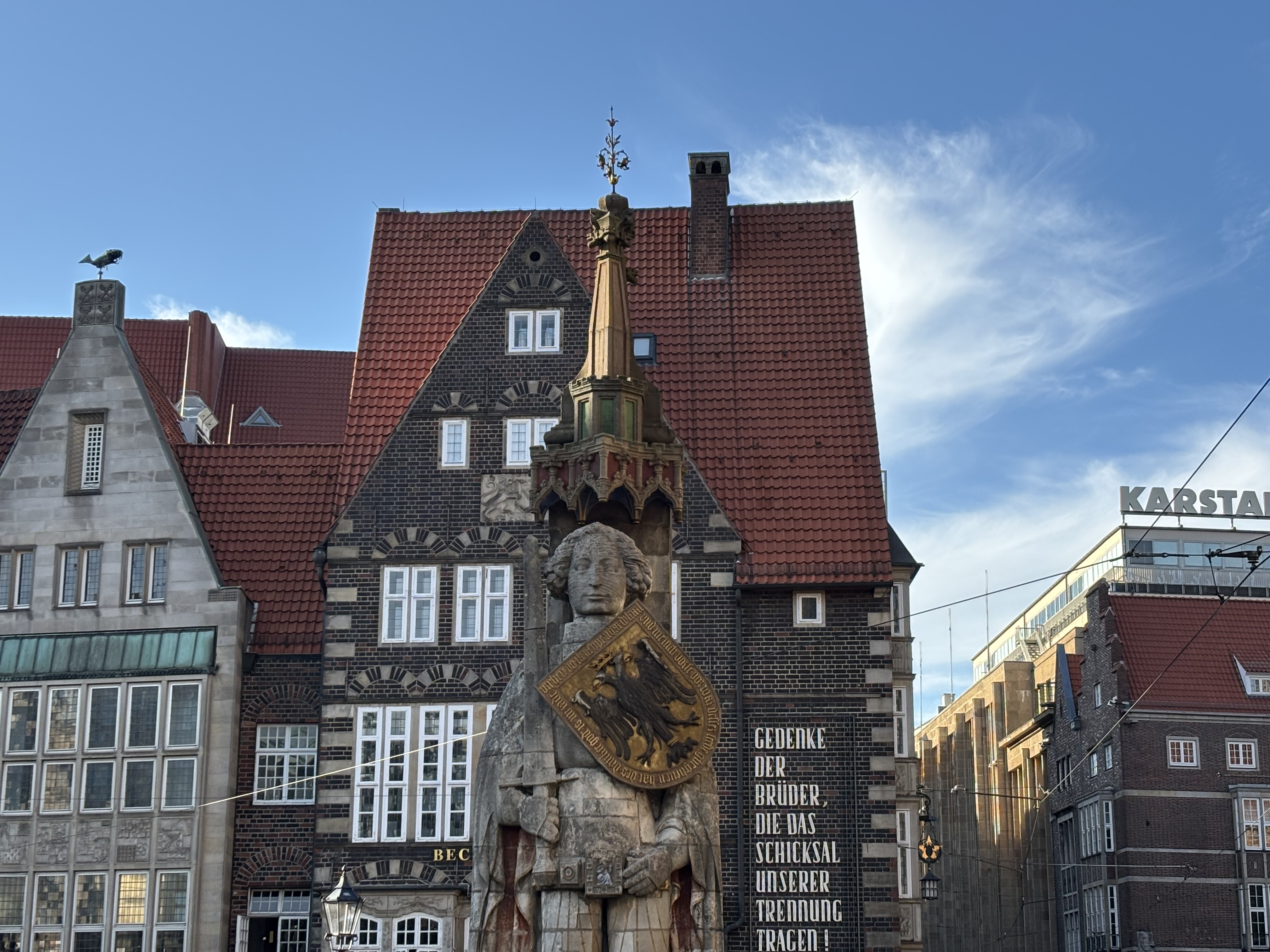Roland and town hall: Bremen's UNESCO World Heritage Site
In the middle of Bremen's market square there are two historical treasures that are not only local landmarks but also enjoy national recognition: Bremen town hall and the Bremen Roland. Since 2004, they have been listed as a UNESCO World Heritage Site – as symbols of autonomy, civic pride and the history of the Hanseatic era.
Bremen Town Hall – A masterpiece of Gothic and Weser Renaissance architecture
Bremen‘s town hall was built between 1405 and 1410, at a time when Bremen was becoming increasingly important economically and politically. Initially built in the Gothic style, it was rebuilt in the Weser Renaissance style at the beginning of the 17th century. At the beginning of the 20th century, an annex was added, the New Town Hall. It is connected to the Old Town Hall and was cleverly designed by architect Gabriel von Seidl as a visual and functional unit.
Bremen‘s town hall was and remains a center of power and political decision-making in Bremen. It stands for the long tradition of civic self-government – a rare occurrence in medieval Europe. The Free Hanseatic City of Bremen strove early on to organize itself independently, and the town hall symbolizes this aspiration until today.
The richly decorated Weser Renaissance facade of the Old Town Hall, adorned with small statues, ornaments and numerous reliefs, is particularly impressive. The building symbolizes the pride of Bremen's citizens and their independence from the archbishop.
An absolute highlight is the Upper Town Hall Hall, a magnificent hall that impressively recalls Bremen's important past as a Hanseatic city. Particularly eye-catching are the artistically crafted ship models from the 16th to 18th centuries, which underscore the central role of seafaring in the city's history.

Somewhat hidden away in the Upper Town Hall is a special treasure: the „Güldenkammer“ (Golden Chamber). The small, richly decorated room impresses with its fine woodwork, shimmering gold ornaments and lovingly designed Art Nouveau elements. Originally, the Güldenkammer was used as a meeting room by Bremen's councilors, then fell into disrepair for a while and was redesigned at the beginning of the 20th century by Heinrich Vogeler on behalf of the Bremen Senate.
The basement of Bremen‘s town hall also houses a real culinary and historical highlight: the „Ratskeller“. As one of the oldest wine cellars in Germany, it is known far beyond the city boundaries. Even writers such as Heinrich Heine and Wilhelm Hauff once found inspiration here. Today, visitors can enjoy a selection from the world's largest collection of German wines (yes, you read that right) in a stylish atmosphere steeped in history.
The Bremen Roland – guardian of freedom
Who was this Roland? Roland was a paladin and nephew of Charlemagne and is considered a symbol of freedom and market rights in many European cities. His mission was to spread Christianity. He was treacherously murdered in an ambush by his enemies, along with his retainers. After his death, Roland was considered a martyr and in the following centuries, Roland figures were erected in various cities, often as a symbol of market rights and independent jurisdiction. In Bremen, his statue was erected in 1404, directly in front of the town hall, as a sign of civil liberty and independence from ecclesiastical rule.
At over 5.5 meters tall, Bremen's Roland statue is the largest free-standing Roland statue in existence. He holds a sword and a shield bearing the imperial eagle, a symbol of strength and protection. Bremen's Roland was also the first free-standing statue in a public space. Incidentally, the pointed knees served as a unit of measurement in the Middle Ages: the distance between the two points is one Bremen “elle” (cubit). Cloth merchants, for example, are said to have measured their goods there.
The saying goes: “As long as Roland stands upright in the market square, Bremen will remain free.” This sums up the emotional and historical significance of the statue for the citizens of Bremen.

Why UNESCO World Heritage?
In 2004, the UNESCO Commission awarded Bremen‘s town hall and the Roland statue World Heritage status. The reason: both buildings are outstanding examples of the civic self-assertion of the Holy Roman Empire of the German Nation. They uniquely embody the development of urban autonomy and civic culture in the Middle Ages. In addition, Bremen's Roland is the most representative of the Rolands, which were erected as symbols of freedom and market rights. The Bremen town hall and the Roland are not only stone witnesses to history, but living symbols of a proud city with a rich history. As a UNESCO World Heritage Site, they represent the ideals of freedom, democracy, and civic culture – values that have lost none of their significance today.
Would you like to learn more about our world heritage in Bremen? Then why not take one of our guided tours through Bremen's Old town? You can find more information here: Guided tour through Bremen's Old town.

